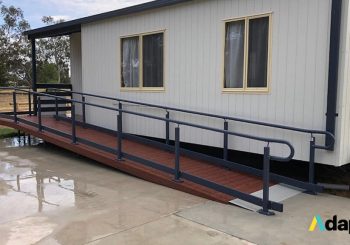Wheelchairs are used for several different reasons
They provide the user with independence, the ability to enjoy life and also become a source of comfort. Using a wheelchair isn’t that difficult, but there are quite a few safety measures that need to be followed to ensure that the user is entirely safe and that they are getting the best out of the wheelchair. This wheelchair safety guide can help you avoid accidents and prevent falls from occurring.
How To Use A Wheelchair Without Harming Yourself
#1 The Centre of Gravity
Getting used to the centre of gravity is the first thing to do when you start using a wheelchair. It is essential that you position yourself correctly to ensure your safety. You will probably want to opt for castors early on. They will help you maintain stability and balance. Carry out a few practices like bending, moving in and out of the wheelchair and reaching. These moves will result in a change in weight distribution. It is best to have someone help you while practicing these moves.
#2 Bending Backwards
There could be situations when you need to bend backward to reach out for something. Position the wheelchair close to the object and then use the castors to extend from the wheels. This will create a long wheelbase. Without changing the position, you are sitting in, extend your arm as far as it goes.
#3 Bending Forward
The first and most important thing of all is to never reach out for an object which requires you to position yourself forward on your wheelchair. This can be extremely dangerous. It is a much better idea to set the castors away from the drive wheels. The next step is to lock the wheels and then extend your arm towards the object.
Prevent Accidents From Occurring
The most common accident that occurs among wheelchairs users is tipping and falling. There are different things than can cause tipping, which include moving your wheelchair too fast, moving over slippery surfaces, the user hitting a bump which causes an imbalance and unlocks the brakes as well. Ensure that the tipping lever is always secure and also be careful around tight corners or rough terrain.
Additional Safety Tips
- Always lock the brakes before getting off the wheelchair. Also, keep the power off on electric wheelchairs.
- Adjust the footrests and armrests before getting into the wheelchair
- Stacking the back of the wheelchair with heavy objects should be avoided at all costs. There are chances that the wheelchair might tip backward.
- Install flags, taillights and other flashing objects to you wheelchair before going out at night. This allows people on the street to spot you from a distance
- Forcing your wheelchair down staircases or slopes should strictly be avoided.
- Replace your castors regularly. If your wheelchair moves from side-to-side when you are moving fast in the wheelchair, it is a sign that your tyres need replacement.
- Set and program your wheelchair setting to a speed that you are comfortable with.
- It is advised to avoid the rain entirely. There are chances of the wheelchair losing traction. The electronics of the wheelchair can get affected as well.
- To avoid tripping, move the footrests during transfer.
- Avoid leaning too much.
- Always lock the brakes before getting out of the wheelchair.
- Never overreach to grab something.
- Never position yourself too far forward on your seat.
Why High Quality Ramps are Important
- When it comes to the safety aspect of using wheelchairs, the kind of ramp you are moving the wheelchair on has a role to play too. You have little control on the types of ramps and surfaces installed in public or commercial settings. However, if you are getting a disability ramp installed in your home, it’s necessary to make sure you hire professionals like us at Adapta for the installation.We will ensure that the ramp we build is in line with DDA guidelines and that it is constructed using tough and hardy materials. We offer various configurations and there are numerous customisation options too. You have the assurance that the ramp’s surface will have the right amount of traction and that the edges and railings will provide additional support as required. Our team will provide you all the information you need about the different types of ramps and their specifications. We offer a wide variety of ramp layouts and options. You can call 1800 232 782 or contact Adapta through this form, and one of our representatives will contact you shortly.



